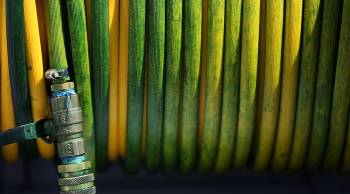Sony recently released its spiffy new W mini series Vaio notebook which has a green keypad frame. I know. You would be reasonable to assume a green product — literally green — cannot be sustainably green. Well, in this case you would be pleasantly surprised to be wrong. (Photo via Sony)
The 2010 Consumer Electronic Show showcased hundreds of new products, all part of the worldwide crisis in e-waste that is hitting children and adults in developing countries hard with toxic trash’s health and pollution legacy. Many constituent parts of computers, when incinerated or otherwise handled at the end of their life, can turn into substances clearly linked with immune and reproductive disorders, birth defects, neurological damage and cancer.
Against this backdrop described by the Basel Action Network and Silicon Valley Toxic Coalition
in Exporting Harm, there are some positive developments in the design and manufacture of emerging electronics. Sony was an early leader in sustainable practices and recently elected to remove chlorine and bromine from computers as outlined in a recent report (PDF) by ChemSec (the International Chemical Secretariat) and Clean Production Action.
The W series Mini Vaio has some playful packaging features, such as a plastic enclosure made from 23% recycled CDs (must have been very bad music to not have even made the resale market!) and a carrying case from plastic bottles. It is lit with energy-sipping LEDs, and apparently reduces CO2 emissions by 10% (based on the innovative use of existing plastic products in its packaging and casing).
What was much more telling to me is the fact that it’s registered with EPEAT in addition to Energy Star 5.0 and RoHS (the European bad boy list of Restricted Hazardous Substances which includes lead, cadmium, and mercury among others). EPEAT is an acronym for Electronic Product Environmental Assessment Tool, and it makes Energy Star ® look like a coloring exercise. The standards contain 51 robust criteria and are light-years beyond merely energy considerations. Witnesseth: materials (heavy metals, plastics), design for end of life (to facilitate disassembly for future gadgets or other products), product longevity, energy, end of life management (the 800 lb gorilla), corporate performance (remember the product vs. whole company analysis?) and packaging are all considered in the registration process.
The US Electronics Industry has made great strides in product development but many companies are persistently stonewalling attempts to develop a US policy to develop a cogent end-of-life system called product stewardship. There are some companies that have take-back programs but the US infrastructure is still woefully inadequate to address what will only continue to be an international travesty and embarrassment. The world disposes (read that as “throws out”) 50 million tons of e-waste each year. Here is an incredible, missed opportunity to create hundreds of thousands of jobs across the US to develop a safe, responsible infrastructure to handle e-waste.
The EPA has a great site with information on e-waste management issues. In the meantime, support Sony’s and other efforts to refine and upgrade sustainable product design and help create positive pressure to address e-waste, one click, snap at a time.
There’s a lot happening in the world. Through it all, Marketplace is here for you.
You rely on Marketplace to break down the world’s events and tell you how it affects you in a fact-based, approachable way. We rely on your financial support to keep making that possible.
Your donation today powers the independent journalism that you rely on. For just $5/month, you can help sustain Marketplace so we can keep reporting on the things that matter to you.


















